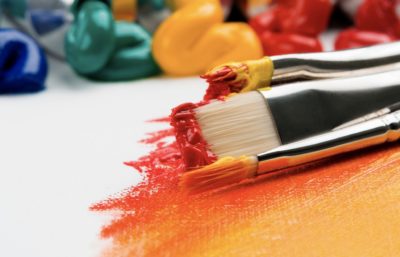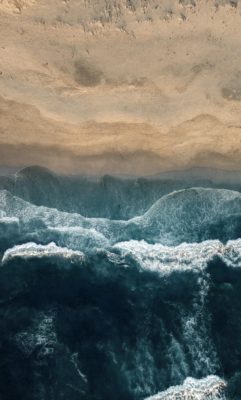What Makes Landscape Photography Fine Art?
October 7, 2018
One may often come across the term fine art to describe landscape photography and it can be confusing as to what this refers to. Some people assume that all kinds of photography are art. On the other hand, some people are unsure why landscape photography comes under ‘Fine Art’. Well, it doesn’t always, but it certainly can.
There are certain factors that, when fulfilled and compared to the photographer’s effort, can subjectively outline how landscape photography can be fine art. But first, it’s crucial that we draw a line between what necessarily are, two different concepts; not all fine art photography necessarily involves landscapes, and not all landscape photographs can be described as fine art photography.
When a landscape photographer implements subjective aspects of fine art photography into his or her work, they can create a landscape fine art photograph. These aspects may sound vague to the average person, but mean something different to aspiring fine art landscape photographers.

It Shows an Artist’s Vision
When a photographer takes a picture of a gorgeous landscape with a certain vision and perspective in mind, it can result in fine art photography. That is because the effects added to the image and the impact it will have on the audience are sure to retain the photographer’s vision as an artist. Usually this vision is different to someone who just happened to be visiting a location a took a quick photograph. They may be just trying to record a photograph of the location as a record of visiting it. Not to say they can’t achieve excellent results, especially with modern cameras and smartphones.
An artist will paint with their preferred medium, in my case, that is through my camera and extended through software and printing techniques.
It is to Depict an Idea
Most landscape pictures capture the details of the scene, such as colours and aesthetic beauty. However, to make it fine art, it must relay a certain message by the artist (photographer), to the audience.
A hidden and embedded meaning that indicates to a certain emotion is always a part of fine art landscape photography, even if it is simple to grasp. Once it is able to creatively and effectively depict the emotions felt by the photographer the end result becomes closer to being a piece of art. Of course printing the photograph is really the moment it would normally be classified as fine art.
It Shows the Use of a Complex Technique
This doesn’t mean to say that other types of photography don’t make use of complex techniques, but rather something much more distinct. Always adopt a proper technique to capture all the details in landscape photography. To make it fine art, a photographer would have to use effects and techniques to depict the message, even if it means to manipulate basic features of the scene or landscape.
At times, the landscape in question would not appeal to a fine art photographer. The only reason the photographer will consider it will be an additional factor, which may not be there before or not obvious to the untrained eye. For instance, an amazing scene of the mountains would, on a warm day, give a positive vibe and feeling but perhaps not on a rainy or cloudy day. This is what matters to fine art landscape photographers. They already have an image of what they want in their mind so they focus on taking pictures of anything that looks remotely similar.
Furthermore, a fine art landscape photographer has invested significantly in training, equipment, their business and even just travelling to locations. I have been on many photography trips where my friends believe I’m on a holiday, and while I am having a great time away, there is a level of pressure to come back with a photo that will be sellable, of high quality (making sure all of the settings were as perfect as possible) and is something that people will enjoy.

It Has Higher Value
Fine art landscape photography is more valuable than other pictures that you capture quickly. It takes precise planning and effort to create fine art photography. Conversely, capturing a picture doesn’t require much work except pressing the shutter. There is a general concept that since this form of photography makes use of various materials and types of equipment, you should consider it fine art. Generally photographers who are selling landscape photography that they are promoting as fine art will be using professional level camera equipment, software and printers. The entire process needs to be managed precisely, even down to the type of paper selected. If you are selling fine art photography, you don’t want to be printing with inks or paper that will see the photograph fade over a couple of years, but last for 100+ years, to be enjoyed well into the future, even beyond the life of the artist.

Quality Depends on the Final Product
In other branches of photography, you can leverage the availability of a computer. Therefore, you can view what the final product will look like. In most cases, our photographs are saved onto our computers or phones and from there are destined to being kept in an archived folder that doesn’t ever see the light of day.
As far as fine art photography is concerned, the image is physically produced, be it printed on a variety of mediums such as heavyweight cotton rag paper, canvas or face-mounted to acrylic. This is why the photographer’s job isn’t complete upon capturing the image, nor when he changes the image using post-production effects. It’s a constructive process just like when fine arts was restricted to paintings; an artist would deeply think about which frame and presentation method would best convey the message through his work.
In fine art landscape photography, the artist must select a proper medium on which to print his work. Rather than A4 office paper and an inkjet printer, he should choose between metallic finishes and acrylic bases. Furthermore, the photographer also takes the material of frames into consideration. A professional product is the end result.
These are the biggest differentiators that set fine art landscape photography from other domains of the practice. You have to master the skill and display it in every image. Only then will you gain a reputation as a fine art landscape photographer. In addition, restraint is just as important. For each photograph that I take and share with my audience, there are hundreds more that I don’t share. I only want to share my best, knowing that I am happy with each image I make available for purchase.
